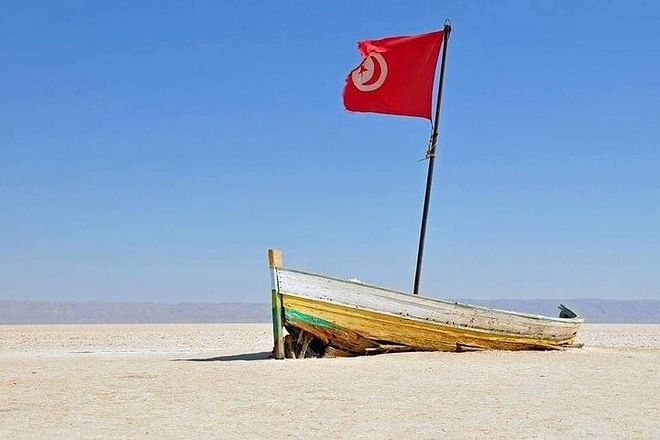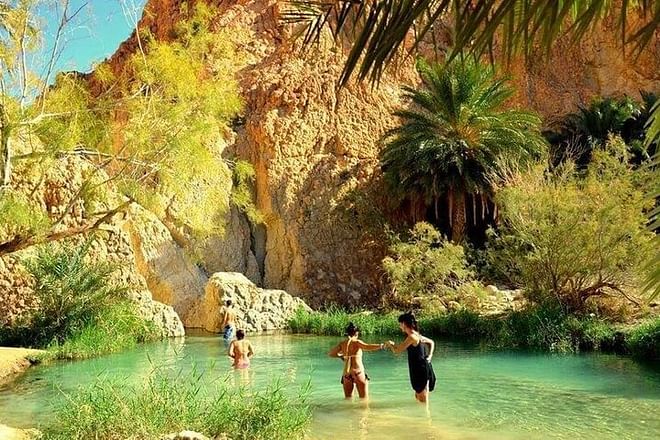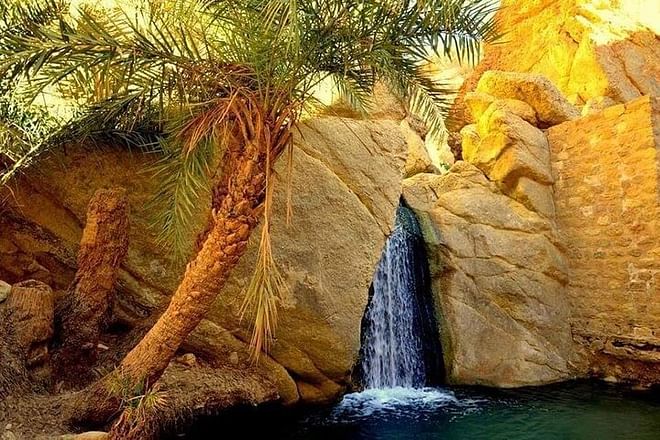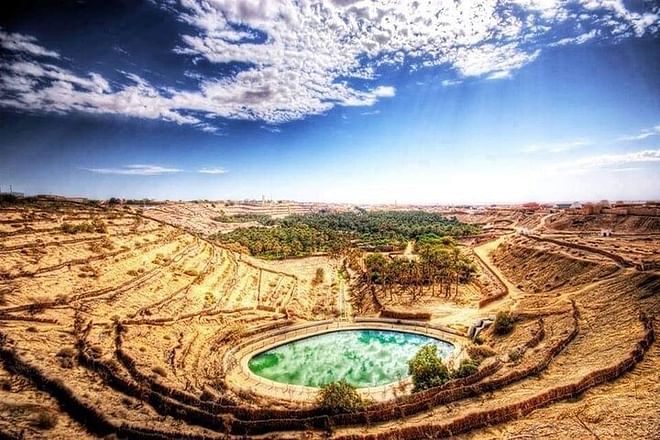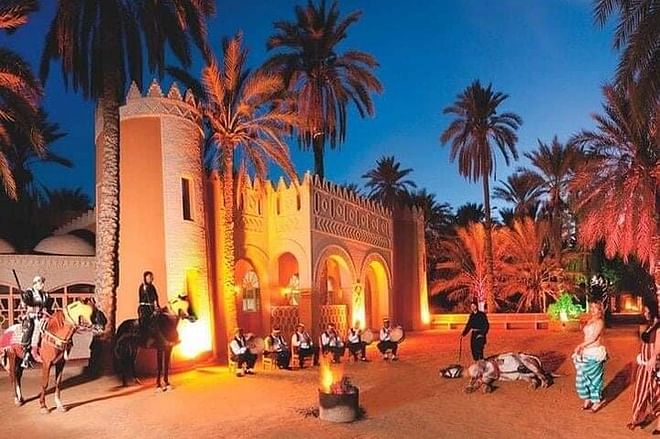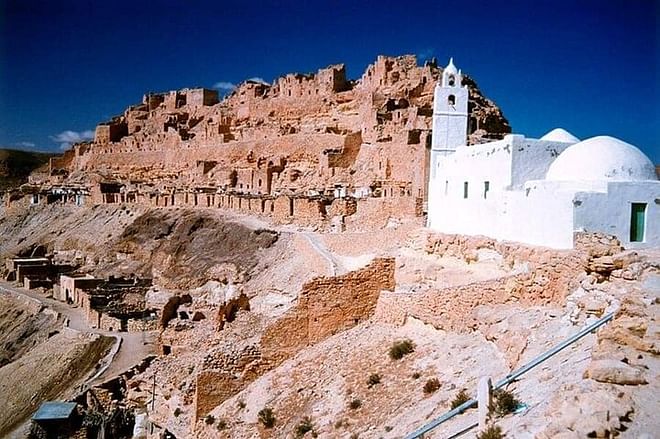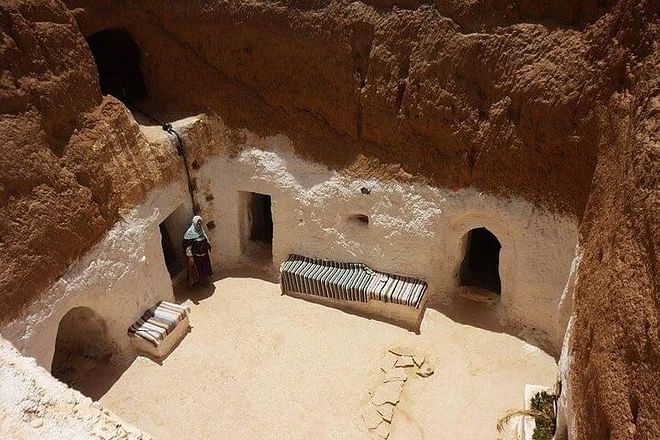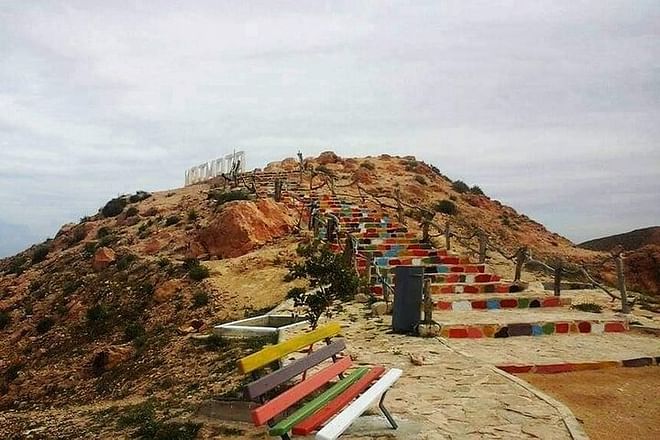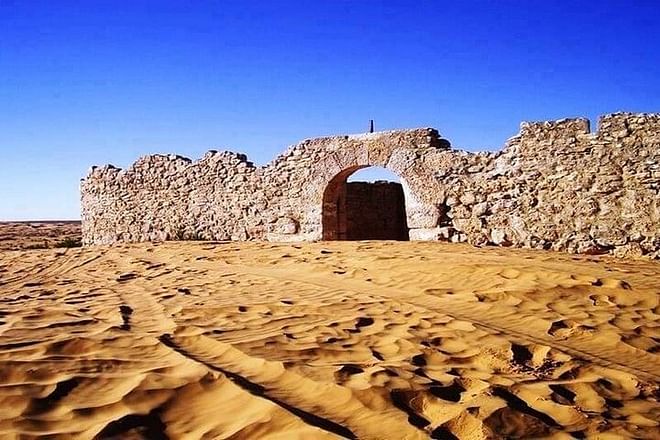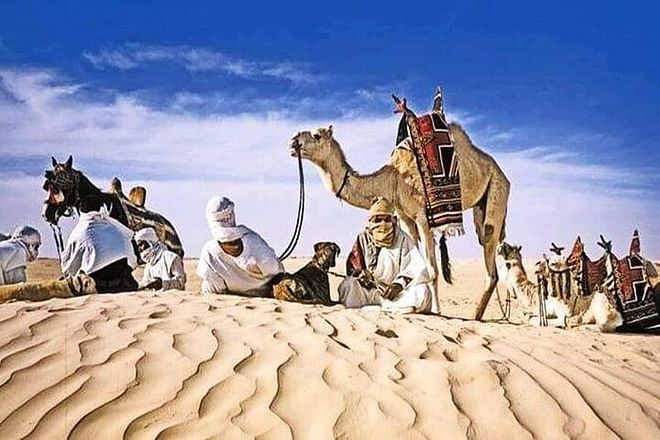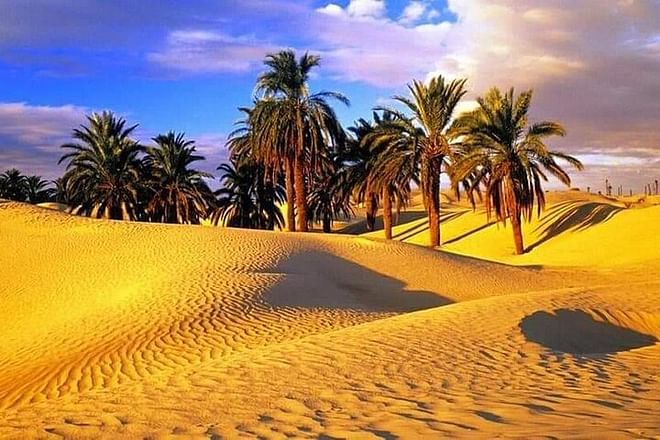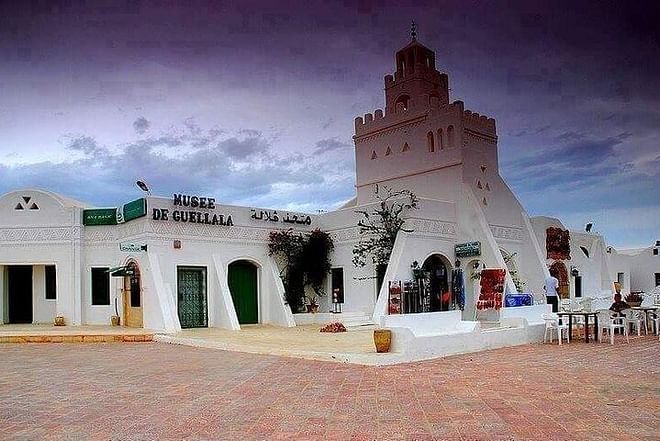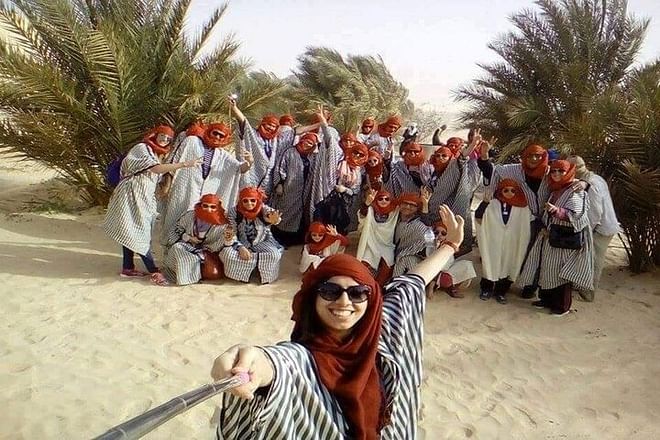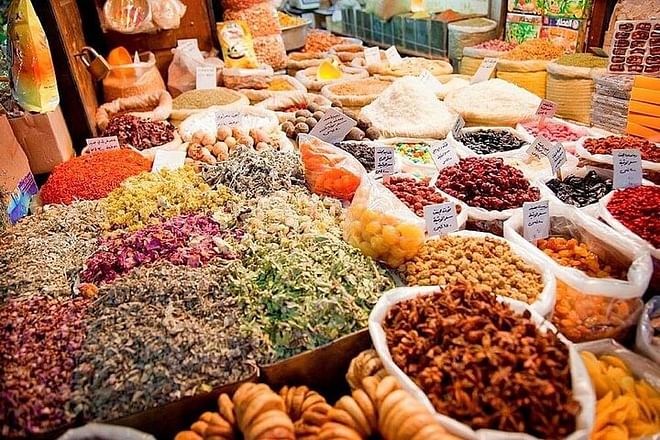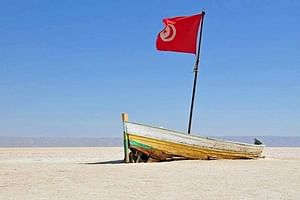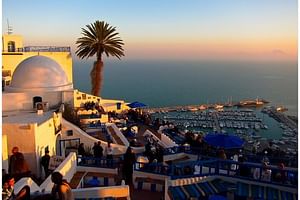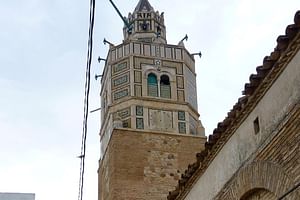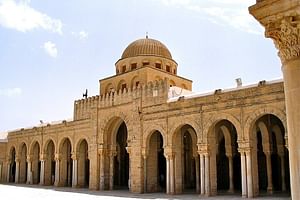Part of our revenue from this experience
will go to a charity in the region
will go to a charity in the region
Our beautiful Tunisia is a natural wealth that combines the beauty of the desert, the charm of the sea and the splendor of the mountains.
This natural beauty is combined with its sunny Mediterranean climate all year round accompanied by another richness of history, culture and heritage. And therein lies the strength of our Excursion that we organized.
This natural beauty is combined with its sunny Mediterranean climate all year round accompanied by another richness of history, culture and heritage. And therein lies the strength of our Excursion that we organized.
Duration
6 days
The tour starts at
Tunis, Tunisia
-
Day 1
Kairouan_TozeurKairouan_Tozeur -
Day 1
The Great Mosque is the symbol of Kairouan. It is one of the oldest and most beautiful mosques in the world, one of the most impressive monuments in the whole Maghreb! Its religious prestige makes Kai...The Great Mosque is the symbol of Kairouan. It is one of the oldest and most beautiful mosques in the world, one of the most impressive monuments in the whole Maghreb! Its religious prestige makes Kairouan the 4th holiest city in Islam. We admire its imposing minaret, its majestic courtyard with impressive dimensions, surrounded by superbly designed arcades and sheltering a sundial, and the high doors of richly carved cedar wood. They open onto the prayer rooms, adorned with dozens of marble columns. Built in 670, this architectural masterpiece, whose appearance evokes an adobe fortress, inspired other mosques in the Maghreb. -
Day 1
The medina of Kairouan is one of the most preserved and authentic in Tunisia, where you can take a look in the souks, taste the pastries of Kairouan "Les Mekroudhs" and its artisanal manufacture of ca...The medina of Kairouan is one of the most preserved and authentic in Tunisia, where you can take a look in the souks, taste the pastries of Kairouan "Les Mekroudhs" and its artisanal manufacture of carpets. -
Day 1
Tozeur is the capital of the Bled El Jérid region, located in the south-west of the country, on the border with Algeria. Renowned for its huge palm grove, its succulent dates and the beauty of the ar...Tozeur is the capital of the Bled El Jérid region, located in the south-west of the country, on the border with Algeria. Renowned for its huge palm grove, its succulent dates and the beauty of the architecture of its sun-baked brick houses and mosques, it is one of the jewels of southern Tunisia. Known for the superior quality of its dates and mainly the "deglet ennour" variety, fingers of light, with flesh -
Day 1
The Chak-Wak Tozeur Museum is an entertainment, entertainment and culture park, located in the heart of the largest palm grove in Tunisia, the oasis of Tozeur. The Chak-Wak Tozeur Museum is a space of...The Chak-Wak Tozeur Museum is an entertainment, entertainment and culture park, located in the heart of the largest palm grove in Tunisia, the oasis of Tozeur. The Chak-Wak Tozeur Museum is a space of five hectares, fifty dinosaurs and a hundred animal, humanoid and human figurines, mini-museums, caves, huts, all scattered in lush oasis vegetation. The “Chak-Wak” -
Day 1
One night in Tozeur 4* hotelOne night in Tozeur 4* hotel -
Day 2
Tozeur-DouzTozeur-Douz -
Day 2
Chebika is a mountain oasis located in the south of Tunisia, more precisely in the west of the governorate of Tozeur.Chebika is a mountain oasis located in the south of Tunisia, more precisely in the west of the governorate of Tozeur. -
Day 2
Tamerza or Tameghza is 14 kilometers north of Chebika, close to the border with Algeria, it was an ancient Roman and Episcopal defensive position in Byzantine times. The road to Tamerza is winding. Al...Tamerza or Tameghza is 14 kilometers north of Chebika, close to the border with Algeria, it was an ancient Roman and Episcopal defensive position in Byzantine times. The road to Tamerza is winding. Along a large canyon it is 10 km long from Chebika. Its construction dates from the 2nd World War when Rommel, besieged by the allies, came from the North. -
Day 2
It is in the Tunisian desert 14 km from Nefta and 38 km from Tozeur that Georges Lucas set his scene. The place is magical and visitors went from curiosity to adventure. Moreover, these same sets were...It is in the Tunisian desert 14 km from Nefta and 38 km from Tozeur that Georges Lucas set his scene. The place is magical and visitors went from curiosity to adventure. Moreover, these same sets were used for the filming of episodes I and II of Star Wars (Star Wars). -
Day 2
The basket of Nefta is a crevice in the form of a basket from which 152 springs emerged to irrigate the entire palm grove of Nefta. In the 1980s the springs dried up one after the other and there was ...The basket of Nefta is a crevice in the form of a basket from which 152 springs emerged to irrigate the entire palm grove of Nefta. In the 1980s the springs dried up one after the other and there was desolation. The phenomenon was the same in El Hamma, Degache and finally Tozeur. -
Day 2
The Chott Djerid salt lake is the largest saline plain or sebkha in Tunisia with an area of approximately 5,000 km2. It is the largest sebkha in the Maghreb.The Chott Djerid salt lake is the largest saline plain or sebkha in Tunisia with an area of approximately 5,000 km2. It is the largest sebkha in the Maghreb. -
Day 2
Douz is a city in southern Tunisia known as the “gateway to the Sahara. Where you will admire a quite superb Sahara sunset; and you can, at the same time, enjoy the Sahara desert by a Quad ride on t...Douz is a city in southern Tunisia known as the “gateway to the Sahara. Where you will admire a quite superb Sahara sunset; and you can, at the same time, enjoy the Sahara desert by a Quad ride on the sand dunes, camel ride (optional). -
Day 2
One night in a 4* hotel in DouzOne night in a 4* hotel in Douz -
Day 3
Toujane Matmata ksar ghilaneToujane Matmata ksar ghilane -
Day 3
Occupying a cave-like room on top of a mountain, Escale de Toujane, represents an excellent vantage point that will give you some insight into the geography of the area. This small souvenir shop and c...Occupying a cave-like room on top of a mountain, Escale de Toujane, represents an excellent vantage point that will give you some insight into the geography of the area. This small souvenir shop and cafe overlooks a rolling desert crossed by dry riverbeds and a quaint little village. Admire the view of the great hills. -
Day 3
The city of MATMATA is located in the south-east of Tunisia, more precisely to the west of the city of Gabès. It is an ancient Berber village spread on the hills, identifying with the rocky landscape...The city of MATMATA is located in the south-east of Tunisia, more precisely to the west of the city of Gabès. It is an ancient Berber village spread on the hills, identifying with the rocky landscapes, with a panoramic view at the top of the mountain and hiding one of the strange sites of Tunisia. The houses of this village are called troglodyte houses where you can admire the beauty of the underground dwellings in MATMATA. They are located in an underground pit in the form of caves, and each pit takes a circular shape and consists of a courtyard decorated with drawings and colors, and it consists of other rooms of the house, the rooms of the house with smooth mud. If you are a lover of history and exploration of civilizations, it is recommended to visit this beautiful village, which is visited by tourists from all over the world on daily tours to discover underground life and learn about the customs and traditions of its inhabitants. -
Day 3
KSAR GHUILEN is an oasis in the south of Tunisia located on the eastern limit of the Grand Erg Oriental, and reputed to be the southernmost of the Tunisian oases and one of the gates of the Tunisian S...KSAR GHUILEN is an oasis in the south of Tunisia located on the eastern limit of the Grand Erg Oriental, and reputed to be the southernmost of the Tunisian oases and one of the gates of the Tunisian Sahara desert, a hot spring emerges in the 'oasis. This source, in which it is most often possible to bathe, would have thermal virtues. Where you will admire a rather superb Sahara sunset; and you can both enjoy the Sahara desert with a Quad ride on the sand dunes (extra), and a swim in the thermal pool of Ksar Ghilane (Included in the offer) . -
Day 3
One night in ksar ghilane in a guest house or similarOne night in ksar ghilane in a guest house or similar -
Day 4
Tataouine ksar ouled soltane chenini the island of DjerbaTataouine ksar ouled soltane chenini the island of Djerba -
Day 4
TATAOUINE: The governorate of southern Tunisia is one of the most important tourist centers due to the richness of its archaeological and heritage reserves and the environmental and ecological diversi...TATAOUINE: The governorate of southern Tunisia is one of the most important tourist centers due to the richness of its archaeological and heritage reserves and the environmental and ecological diversity it contains. Tataouine is characterized by the homogeneity of its Berber, Berber and Arab population -
Day 4
Located about 20 km south of the city of Tataouine in southern Tunisia, the Ksar Ouled Soltane is a very well preserved fortified granary built by the Berbers in the 15th century. Built with adobe (ra...Located about 20 km south of the city of Tataouine in southern Tunisia, the Ksar Ouled Soltane is a very well preserved fortified granary built by the Berbers in the 15th century. Built with adobe (raw earth), the ksar is spread over two courtyards, each of which has vaulted attics that serve as food reserves, called ghorfas. In ancient times, granaries were often fortified to stop looters of food supplies from villages. Like other granaries built by Berber communities in North Africa, the Ksar Ouled Soltane is located on a hill, protecting it from these raids. -
Day 4
Chenini, this Berber-speaking Jewish village located in southern Tunisia, 18 kilometers from Tataouine, was established by mixed Berbers and Arabs in a mountainous area, as it was erected on top of a ...Chenini, this Berber-speaking Jewish village located in southern Tunisia, 18 kilometers from Tataouine, was established by mixed Berbers and Arabs in a mountainous area, as it was erected on top of a hill. Its oldest buildings date back to the 12th century. It is distributed on three levels, surmounted by the Chenni Palace, which is a ruined castle which was undoubtedly used to store crops such as oil, cereals, spices, etc... And some buildings are still used to store cereals by the villagers who live in the valley. -
Day 4
Djerba is an island off the Tunisian coast known for its Mediterranean beaches and white desert towns influenced by Berber, Arab, Jewish and African cultures. Its main town is Houmt Souk. It is famous...Djerba is an island off the Tunisian coast known for its Mediterranean beaches and white desert towns influenced by Berber, Arab, Jewish and African cultures. Its main town is Houmt Souk. It is famous for its craft markets, its fishing port and its 16th century fortress, Borj el Kebir. To the south is the El Ghriba Synagogue, a place of pilgrimage for North African Jews. -
Day 4
One night in Djerba 4* hotelOne night in Djerba 4* hotel -
Day 5
Island TourIsland Tour -
Day 5
The Guellala Museum is an ethnographic museum located in Guellala in TunisiaThe Guellala Museum is an ethnographic museum located in Guellala in Tunisia -
Day 5
The Ghriba Synagogue is a Tunisian synagogue that is one of the main identity markers of the Jews of Djerba, one of the last living Jewish communities in the Arab world. It is the subject of an annual...The Ghriba Synagogue is a Tunisian synagogue that is one of the main identity markers of the Jews of Djerba, one of the last living Jewish communities in the Arab world. It is the subject of an annual pilgrimage, on the occasion of the Jewish holiday of Lag Ba'omer, bringing together several thousand pilgrims. -
Day 5
Djerbahood is an urban art event during which artists from around the world take over the Tunisian village of Erriadh on the island of Djerba to produce 250 works created for the occasion. It was laun...Djerbahood is an urban art event during which artists from around the world take over the Tunisian village of Erriadh on the island of Djerba to produce 250 works created for the occasion. It was launched by the Galerie Itinérance de Paris in June 2014. -
Day 5
Houmt Souk is the administrative capital of the Tunisian island of Djerba. It is located about twenty kilometers from Ajim (point of arrival on the island by ferry) and El Kantara (point of arrival on...Houmt Souk is the administrative capital of the Tunisian island of Djerba. It is located about twenty kilometers from Ajim (point of arrival on the island by ferry) and El Kantara (point of arrival on the island by the so-called Roman road). It is the main town of the municipality of Djerba-Houmt Souk which is both the capital of a delegation and the seat of a municipality with four districts for 75,904 inhabitants (2014)2 and covering 176.54 km2 without counting the district of Mezraya. The city of Houmt Souk alone has a population of 44,555 inhabitants in 2004 -
Day 5
One night in Djerba 4* hotelOne night in Djerba 4* hotel -
Day 6
The Return via GabesThe Return via Gabes -
Day 6
The Mareth Line was a series of fortifications built by the French to protect their protectorate of Tunisia from an Italian invasion of Libya. During World War II, Rommel refortified the Mareth Line d...The Mareth Line was a series of fortifications built by the French to protect their protectorate of Tunisia from an Italian invasion of Libya. During World War II, Rommel refortified the Mareth Line during his retreat from Egypt after his defeat at El Alamein. The Mareth Line was eventually overwhelmed and Rommel had to continue his retreat. The museum has detailed plans of the battle and some artifacts. Outside there are artillery pieces, bunkers and old trenches. -
Day 6
Gabès is a city in the south-east of Tunisia. The largest city in southern Tunisia after Sfax, Gabes has the distinction of being both an oasis and a seaport. This port function dates from the indust...Gabès is a city in the south-east of Tunisia. The largest city in southern Tunisia after Sfax, Gabes has the distinction of being both an oasis and a seaport. This port function dates from the industrial development of the 1970s.
Dinner
Breakfast
GST (Goods and Services Tax)
Air-conditioned vehicle
Private transportation
The services of a guide approved by the Tunisian Tourist Office
Entrance fees to the sites and museums mentioned in the program
Breakfast
GST (Goods and Services Tax)
Air-conditioned vehicle
Private transportation
The services of a guide approved by the Tunisian Tourist Office
Entrance fees to the sites and museums mentioned in the program
Camel ride in Ksar Ghilane or Douz (15 € per person)
Quad excursion to Ksar Ghilane or Douz (30 € per person)
Quad excursion to Ksar Ghilane or Douz (30 € per person)
Featured Experiences
© 2020 XplorPal. All Rights Reserved
